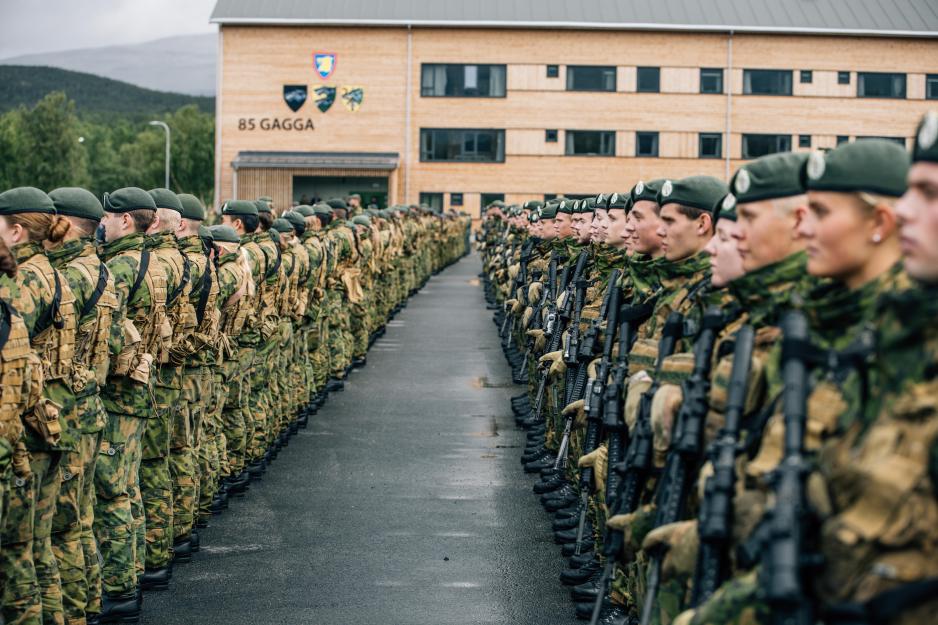Op-ed: Norway Arms Itself... But Who Will Pay The Bill?

The Norwegian government is proposing increased funding to get more people into the defense sector. In the north, the Finnmark Brigade in particular is being built up. The brigade, which was established in August and is due to be completed by 2032, will number from 3,000 to 5,000 soldiers. Image from the ceremony for the establishment at Porsangmoen camp. (Photo: Helene Sofie Thorkildsen/The Norwegian Armed Forces)
Rising defense spending puts pressure on the welfare state and on taxpayers, says Ioanna Liouta, political and economic analyst.
This is an op-ed written by an external contributor. All views expressed are the author's own.
When one of the world’s most prosperous and socially balanced nations decides to dramatically increase its defense spending,the question is not only why, but also at what cost.
Norway in 2025 stands precisely at that crossroads between its long standing commitment to social welfare and the emerging reality of a more dangerous European security landscape.
From prosperity to security?
According to the Organisation for Economic Co-operation and Development (OECD) Economic Outlook, Volume 2025 Issue 1, Norway’s mainland economy (excluding oil and gas) remains resilient,expected to grow by 1.7% in 2025 and 1.9% in 2026.
Inflation is easing, real incomes are improving, and unemployment remains low.
Yet behind these stable indicators lies a deep fiscal shift.
Nearly 50% real-term increase in a single year.
Prime Minister Jonas Gahr Støre’s government has committed to a sharp rise in defense expenditure: from 2.27% of Gross Domestic Product (GDP) in 2024 to 3.35% in 2025 roughly USD 16.5 billion, including military aid to Ukraine.
That’s a nearly 50% real-term increase in a single year.
Over the next decade, Norway plans to allocate up to 5% of its GDP to defense and security far exceeding NATO’s traditional 2% benchmark.
Norway’s identity has long been anchored in its generous welfare system universal healthcare, free education, and strong social protection.
But the shift towards higher military spending raises a fundamental question. Can the same model of social care be sustained when public budgets increasingly fund defense priorities?
Also read (the text continues)
The OECD warns that fiscal policy will require stricter spending rules in the coming years. The triple pressure of an ageing population, green transition costs, and defense modernization will inevitably force trade offs.
The notion that “Norway can afford everything”thanks to its oil wealth the so called Norwegian exception may soon face its first real test.
The bill for citizens
If defense spending continues to grow at this pace, the government faces three options:
Cut back on social programs, draw more heavily from the Government Pension Fund Global (the oil fund) a risky move for future generations,or increase taxation.
The third scenario seems the most likely. Discussions are already under way about revising wealth and capital taxes and possibly raising indirect taxes,such as Value Added Tax (VAT) or energy levies.
The issue is not purely fiscal, it’s political.
However,such measures would disproportionately affect middle income households, potentially eroding the public trust that underpins Norway’s welfare model.
The issue is not purely fiscal, it’s political.
How will a society built on welfare consensus react when the state starts investing more in tanks than in teachers?
The Støre government argues that national security is the foundation of social stability and in a volatile Europe, that argument carries weight.
Yet, as Europe rearms and fiscal space narrows,maintaining both security and social cohesion will become Norway’s central challenge.
The “Norway of the future” may be less socially generous but more militarily secure.
Its success will depend on the government’s ability to preserve tax fairness, boost productivity, and convince citizens that security does not come at the expense of solidarity.
The question, ultimately,is not whether Norway can afford its defense ambitions. It is whether it can afford the social consequences of those ambitions.



